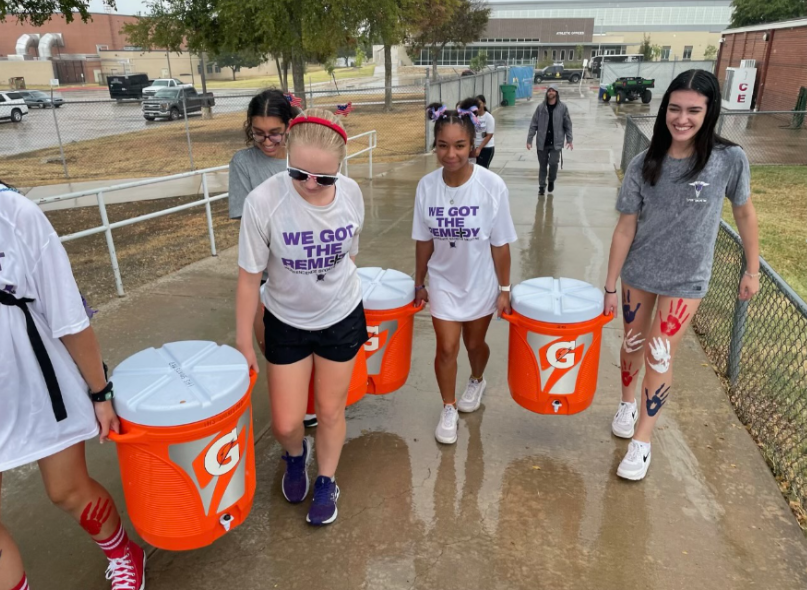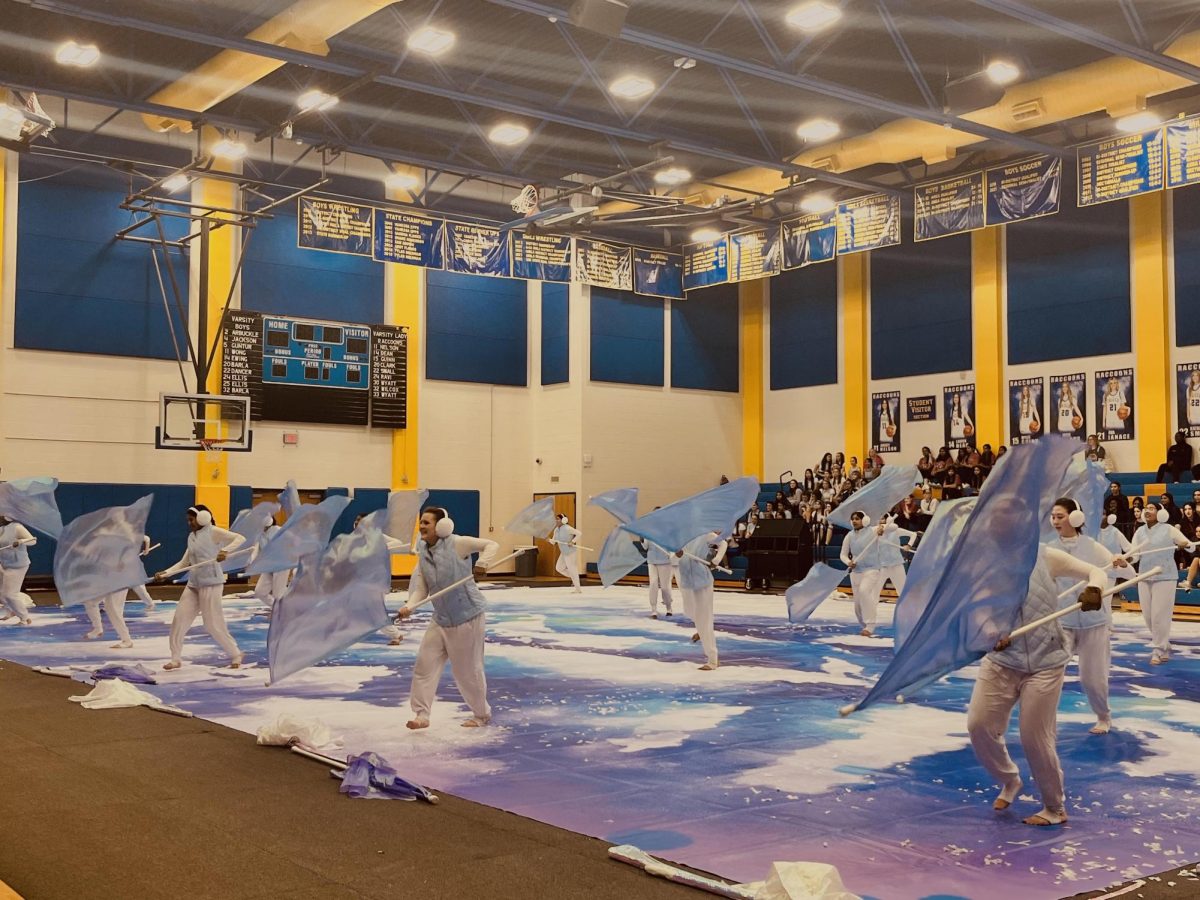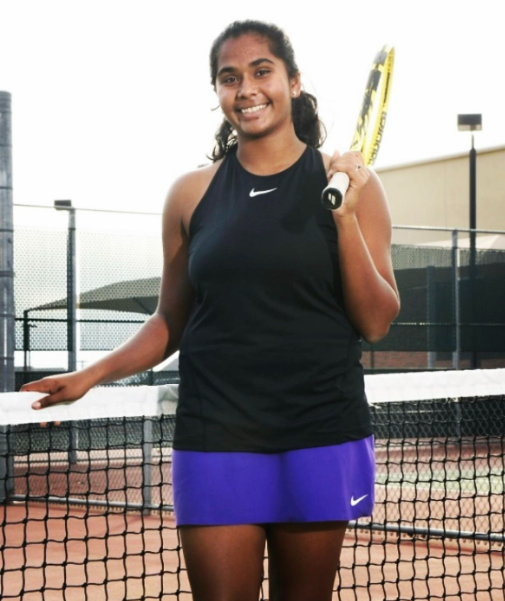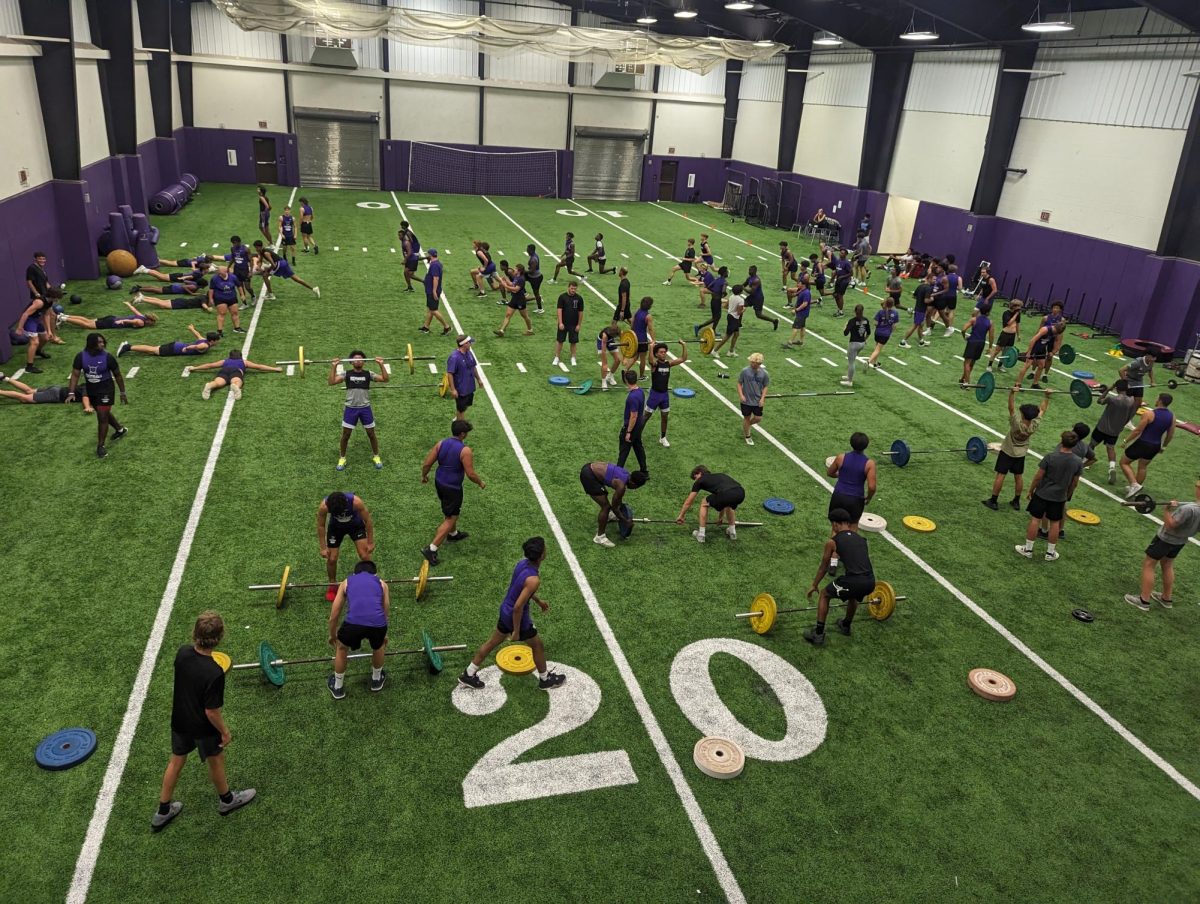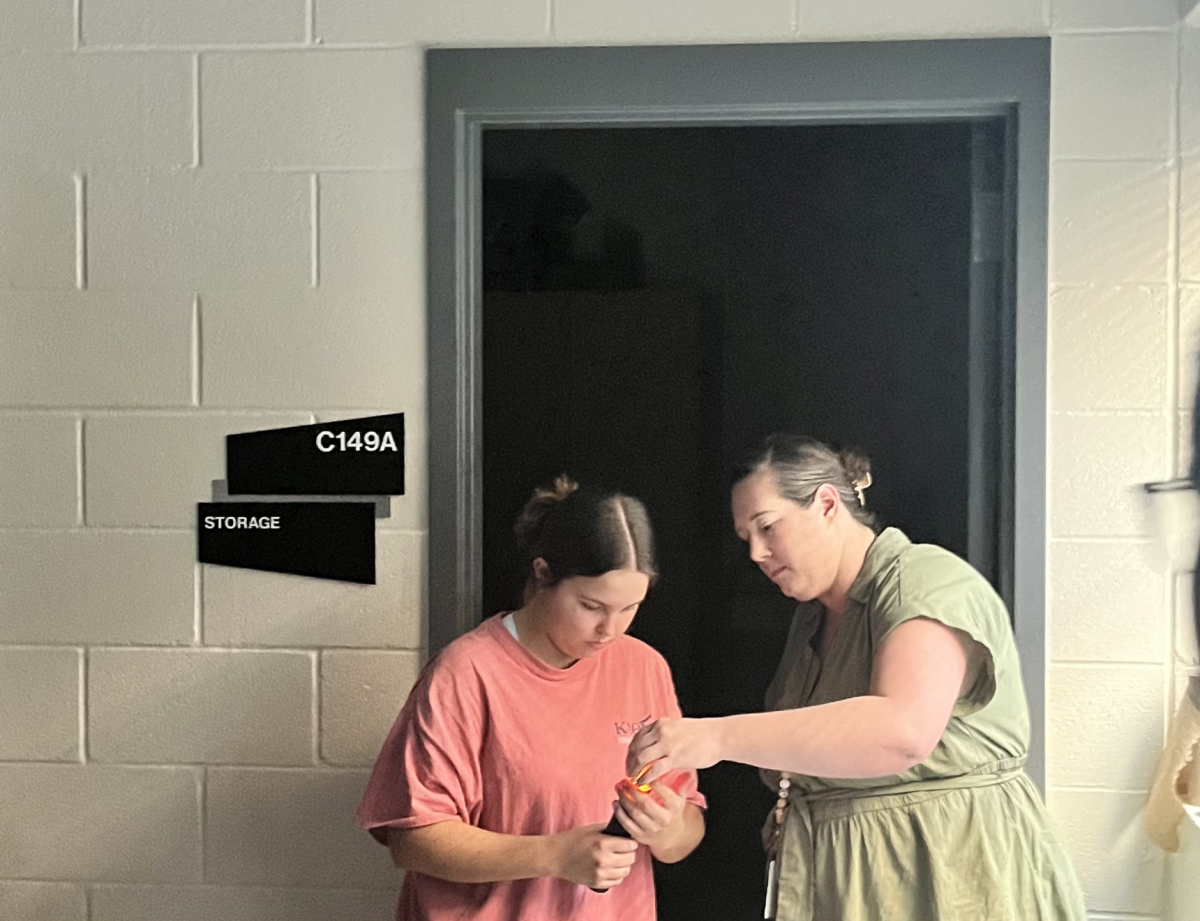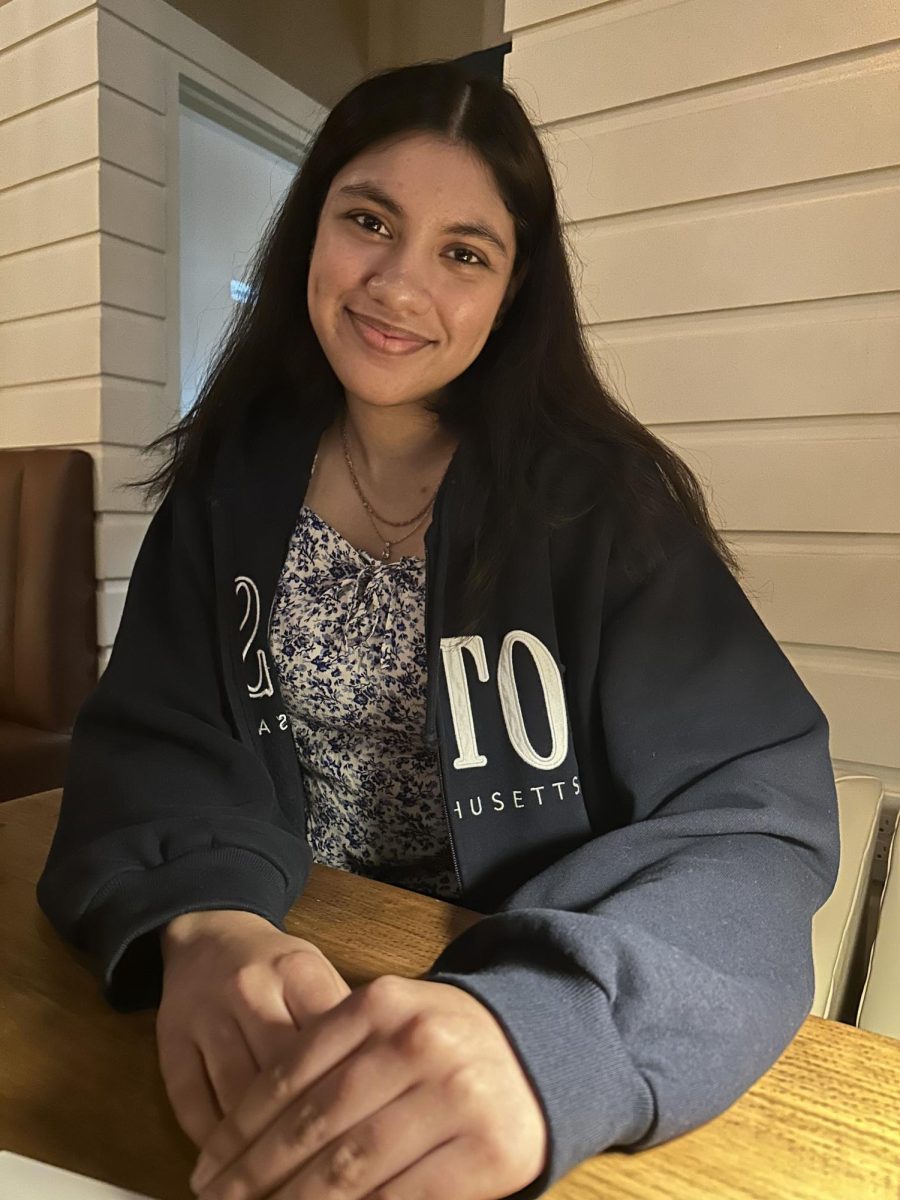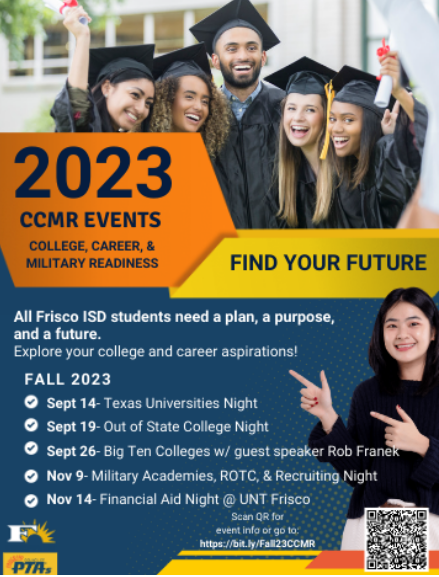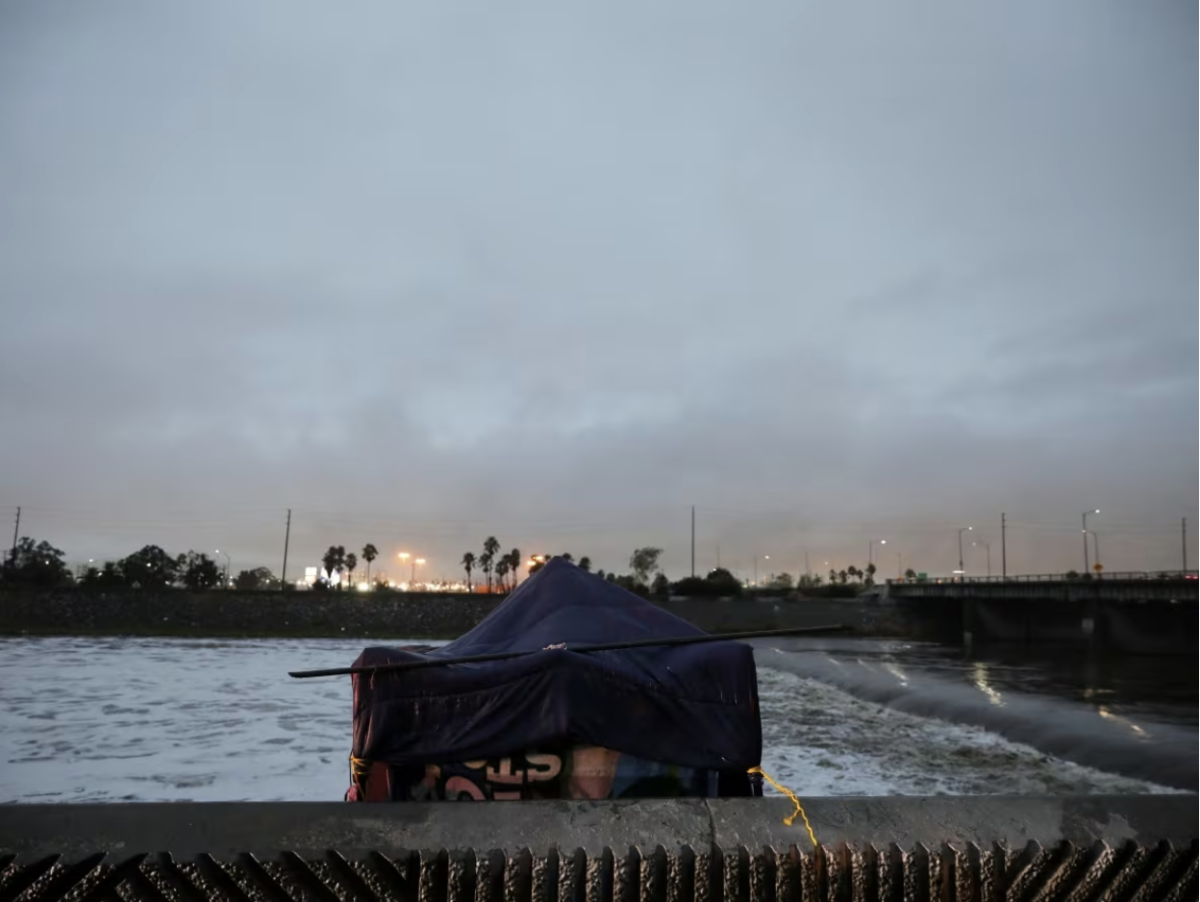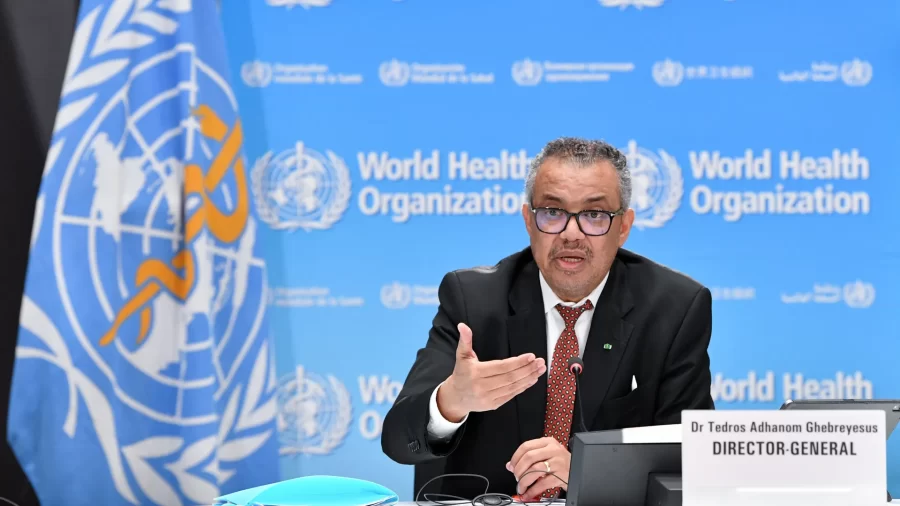“The team behind the team.”
That’s how athletic trainer and sports-medicine teacher, Alexis Davis, describes the sports-med team at IHS.
The sports-medicine team, which is composed of around 20 students, is an essential part of Independence’s sports community. Some duties of trainers include giving out first-aid when necessary, making sure athletes stay hydrated, and providing rehabilitation for injured players, in addition to other medical assistance on the field.
“The sports medicine program essentially gives students opportunities to shadow licensed athletic trainers, including myself and Coach [Joey] Frare,” Davis said. “It presents them with the knowledge of a hands-on clinical experience that can register them for any type of profession in healthcare.”
During the football season, trainers are organized into three groups: purple, gray, and black, which are made up of five to seven students who alternate every three weeks in attending football practices and games. Once the football season is over, trainers are allowed to pick a sport of their choosing.
“We show up at 5:45 in the morning, in order to set up before football arrives,” Kiara Uppal, a senior and the vice-president of the team, said. “We start off by going to the field house, setting up coolers, and bringing water bottles. During practices, we spend time outside with the players on the field, watching them to make sure there are no injuries and they have enough water.”
Though it can seem stressful in their initial weeks on the team, trainers learn how to respond to injuries in high-stress situations.
“There’s so much going on in [the] moment when someone gets hurt,” Michaele Gilmore, a senior and the president of sports-medicine , said. “There’s definitely been some difficult moments when I haven’t known what to do in a certain situation. Making sure you can remember [procedures] on the spot and knowing what to do when something happens is [extremely important].”

In a trainer’s first year, they are enrolled in the sports-medicine class, which prepares them for their ensuing years on the team. During this time, many first-year students gain the necessary skills and knowledge needed to assist others.
“I really like how they teach us,” Issy Buri, a freshman on the team, said. “The class is hard, but the coaches are very relaxed, and since our class is so small, they can go through each thing [in-depth which] really helps us understand as [we] go.”
By joining sports-medicine, students are introduced to new aspects of the medical field.
“For me, personally, it was the medicine part [that initially drew me in], because I’m interested [in] becoming a doctor,” Uppal said. “[But] I think the athletic part was what kept me, because it introduced me to a new aspect of medicine that I wasn’t familiar with. When people think of [medicine], the first thing that [comes to mind] is doctors [or] hospitals, but athletic training is still a huge part of medicine, and it fits into a lot of different lifestyles.”
Being on the team also means being part of a family.
“My favorite moments all happen during football season, because that’s when everyone is much more connected, [with the] the community time that we get,” Uppal said. “The program is small, so having each other’s backs is important. We’re dealing with real high-school athletes, [who] go on to play for college, and that’s their whole career, so we really need that [support from each other].”
Through the team’s help, athletes are able to play in a safer manner.
“The trainers are always trying to make the athletes better and I give them a lot of respect,” Ava Bradford, a senior and varsity soccer player, said. “They are there early in the morning and after practices, if you need something taken care of to prevent an injury from occurring, and always provide the advice and guidance to heal you in the quickest [way possible].”
For the future, many members of the team hope to see more students interested in athletic training.
“I feel there is a big stereotype that we’re just water girls,” Uppal said. “If you’re in the stands, and you see us giving [out] water, that’s what you’re [going to] think of us— I get that— but overall, being more informed in the student body is very important.”
In the long run, being part of the team has fulfilled a desire to give back to the community.
“I think that’s definitely what I get out of being in this program,” Gilmore said. “Whenever I get to help someone, or put them on treatment, a lot of [people] are very grateful. We don’t get a lot of appreciation, but, as an athletic trainer, just getting that smile or ‘thank you’ makes my day.”


